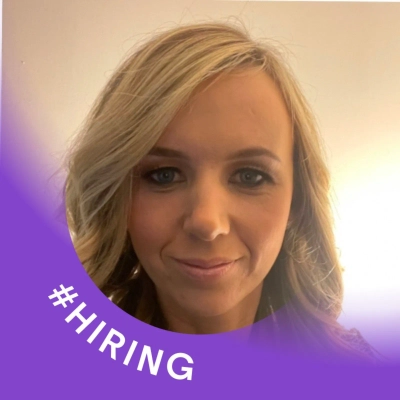How Leaders Navigate Significant Industry Changes With their Teams
In today's rapidly evolving business landscape, leaders face unprecedented challenges in navigating significant industry changes. This article explores key strategies for guiding teams through transformations, from embracing remote work to integrating AI technologies. Drawing on insights from industry experts, it offers practical approaches to turn disruptions into opportunities for growth and innovation.
- Embrace Remote Work
- Adapt to Supply Chain Disruptions
- Prioritize Safety in Electrical Industry
- Evolve with AI Technology
- Pivot to Mobile Data Recovery
- Reframe AI Challenges as Opportunities
- Integrate AI Tools Strategically
- Lead Digital Transformation Through Education
- Retool for Pandemic-Driven Market Shifts
- Navigate AI-Driven Customer Support Changes
- Pivot Content Strategy for Search Updates
- Transform Data Privacy into Brand Trust
- Balance Remote and In-Person Management
- Implement Strategic Organizational Model
- Lead with Integrity in Sustainability
- Refocus on Core Strengths Amid Competition
- Empower Team with Decision-Making Frameworks
- Collaborate on Organizational Restructuring
- Frame Regulatory Changes as Opportunities
- Transition to Virtual Healthcare Delivery
- Adopt Agile Methodology in eLearning
- Turn Market Shifts into Leadership Opportunities
- Streamline Processes for Regulatory Compliance
- Foster Innovation Mindset Amid AI Changes
- Optimize Workflow for Client Demands
Embrace Remote Work
A few years ago, I faced one of those pivotal shifts that completely redefined how we operated at Zapiy. It was during the height of the pandemic when nearly every business—ours included—had to adapt almost overnight to a fully remote model. On paper, the change was logistical: move meetings online, adopt new tools, rethink workflows. But in reality, it was cultural, and that's where the real challenge lay.
I remember the first few weeks vividly. Productivity dipped, not because people weren't working, but because they were overwhelmed. For many, their living room had suddenly become their office, and the boundaries between personal and professional life blurred. As a leader, I realized quickly that if I tried to push for efficiency too early, I'd lose my team's trust. So instead of obsessing over output, I focused on stability and connection.
One of the first things I did was start weekly "pulse calls." These weren't about tasks or deadlines—they were simply open forums to check in, share concerns, and sometimes even laugh about the chaos of it all. That small shift created a sense of psychological safety, which became the foundation for adapting to the change. We then layered on structure: clearer documentation, standardized processes, and intentional communication channels to replace the informal hallway conversations we lost.
What surprised me most was how the adversity sparked creativity. With fewer in-person distractions, some team members began experimenting with new ways to streamline client onboarding and improve reporting. Ideas I might never have seen in a traditional office setting surfaced during those months. Within a year, some of those changes became permanent best practices that strengthened our business long-term.
Leading through that change taught me something I carry forward today: people don't resist change itself as much as they resist uncertainty. By being transparent, empathetic, and willing to experiment alongside the team, we not only navigated the disruption—we grew stronger because of it.
Adapt to Supply Chain Disruptions
One of the biggest changes I had to adapt to at Achilles Roofing was during the pandemic when material prices spiked and availability collapsed. In roofing, timing is everything. Homeowners don't want to hear that shingles are backordered or that a job might be delayed for months. Crews were ready to work, projects were lined up, but the supply chain was completely unreliable. What made it tough wasn't just the shortage—it was learning how to lead through uncertainty when every answer seemed to change week to week.
I started by looking at how we planned jobs before the shortage. We used to order materials per project, expecting suppliers to deliver on schedule. That system broke down overnight. I realized we couldn't keep doing business that way and had to build more flexibility. I began tracking supplier timelines more closely and added weekly calls to confirm availability. At the same time, I built relationships with secondary suppliers who normally weren't on our radar. Splitting orders across multiple sources gave us backup when our main distributor couldn't deliver.
For the crews, I knew burnout was a real risk. Jobs were getting delayed, and the last thing I wanted was guys sitting around waiting for materials. I used those gaps to cross-train crews on different roofing systems and safety upgrades. It wasn't just busy work—it made them stronger roofers. The team could see that the downtime wasn't wasted, which kept morale steady.
What made it work was being transparent on all sides. Customers got straight answers instead of promises we couldn't keep, and crews knew exactly why schedules shifted. That honesty built trust. Instead of losing business, many customers actually referred us because we stayed dependable during chaos.
What I learned is that leading through big change isn't about having perfect control. It's about creating structure when the industry feels unstable. My advice: when the environment shifts, don't just scramble—step back, rebuild your process around the new reality, and communicate clearly. That steadiness is what keeps your business moving forward when others stall.
Prioritize Safety in Electrical Industry
The electrical industry is constantly evolving, whether it's through new technology or updated wiring regulations. The most significant change we've had to adapt to in recent years has been the widespread mandating of safety switches, or RCDs, and how that has transformed our entire approach to every job.
In the past, many electricians still viewed safety switches as a 'nice-to-have' or a novel addition. However, as regulations became stricter, we had to make a serious shift in our mindset. We needed to adapt to a world where every single circuit required this extra layer of protection. For me, the change wasn't just about the new equipment; it represented a fundamental change in how we thought about safety and our responsibility to the client.
Navigating that change began with me. I made it my priority to get certified and fully up to date on the new RCD requirements. I studied all the technical information, attended the courses, and ensured I understood everything there was to know. My approach to guiding the team through this transition was straightforward: I demonstrated, rather than simply instructing. We didn't just receive a memo saying, "use safety switches now." We conducted comprehensive toolbox talks about it. I brought the new equipment to the shop, showed them how to install it correctly, and explained the technical aspects of its functionality. More importantly, I discussed with them why it mattered—that we're not just protecting a house; we're safeguarding a family from potential fire or electric shock.
This shift in mindset has been substantial. It's no longer a matter of debate. Every new job now begins with safety as the primary consideration. Our team is now fully committed to the change, and we're regarded as experts in ensuring every home we work on meets the highest safety standards. This is the main reason why we've established a reputation for being trustworthy and professional. It demonstrates that a company's ability to adapt to industry changes isn't just about maintaining compliance; it's about being at the forefront of what's best for our customers.

Evolve with AI Technology
One moment that really tested our adaptability at Amenity Technologies came when transformer-based large language models began rapidly maturing. Almost overnight, clients who had been asking for traditional NLP pipelines (document classification, entity extraction, intent detection) shifted their focus to generative AI and retrieval-augmented systems. For us, it wasn't just a technology shift; it was a market expectation shift, and ignoring it would have made us look outdated.
The first step I took was acknowledging the change openly with the team. Instead of resisting or pretending our existing stack was enough, I positioned it as an opportunity to evolve. We restructured part of our R&D effort into an "AI Futures Group" tasked with experimenting on small, low-risk projects using GPT-style models and fine-tuning frameworks. This allowed the team to learn fast without jeopardizing ongoing client work. At the same time, we invested in upskilling, organizing workshops where senior engineers shared their findings with the broader team so knowledge diffused quickly.
Leading through that period required balancing excitement with realism. I made it clear we wouldn't chase every shiny trend, but we would explore enough to stay ahead of client expectations. That framing gave people confidence that we weren't abandoning what we knew, but layering new capabilities on top.
The outcome was better than I anticipated. Within a year, we weren't just adapting; we were actively pitching generative AI solutions that complemented our core offerings. The team walked away with a stronger belief that change isn't something to fear; it's something to design around.

Pivot to Mobile Data Recovery
The Challenge: Mobile Revolution Impact
A few years ago, we recognized that the widespread adoption of smartphones was fundamentally reshaping the data recovery landscape. While our company had built strong expertise in PC/Windows data recovery solutions, we were witnessing a seismic shift as consumers increasingly relied on mobile devices for storing their most critical data—photos, contacts, messages, and documents.
Strategic Adaptation
Rather than viewing this as a threat to our existing business model, I saw it as an opportunity to expand our capabilities and better serve our customers' evolving needs. The challenge was significant: mobile data recovery requires entirely different technical approaches, file systems, and recovery methodologies compared to traditional PC environments.
Leading Through Change
I made the strategic decision to invest substantial resources into smartphone data recovery R&D. This meant:
1. Redirecting a significant portion of our development budget toward mobile technology research
2. Assembling a specialized team to focus exclusively on mobile data recovery challenges
3. Accepting short-term revenue impacts to pursue long-term market positioning
Navigating Team Concerns
Initially, some team members were concerned about moving away from our proven PC recovery expertise. I addressed this by clearly communicating our vision: we weren't abandoning our core strengths but expanding them to meet market demands. I emphasized that our fundamental data recovery principles remained the same—we were simply applying them to new platforms.
Results and Impact
Today, our flagship product DataNumen Data Recovery successfully supports smartphone data recovery alongside our traditional PC/Windows capabilities. This strategic pivot has positioned us as a comprehensive data recovery solution provider, allowing us to serve customers regardless of their device preferences.
The key lesson I learned is that industry leadership requires anticipating change rather than simply reacting to it. By proactively investing in emerging technologies while maintaining our core competencies, we've strengthened our market position and demonstrated our commitment to evolving with our customers' needs.

Reframe AI Challenges as Opportunities
One significant change we had to adapt to was the arrival of Google's AI Overviews, which immediately raised concerns about zero-click searches and the impact on organic traffic.
If Google was surfacing full answers at the top, people would have less reason to click through to our pages. My team didn't say or show it outright, but there was clearly a cloud of worry, especially with so much content surfacing about how this shift could affect roles and tie back to job security.
Being the leader, I had to switch into "rational mode" and make it my aim to reset the conversation toward what still remains possible and valuable.
I reminded the team that while Google can deliver quick answers, it cannot teach people how to develop skills like learning to drive, sing, or in our case, master complex marketing strategies.
I wasn't telling them anything they didn't already know. I know my team is sharp. But voicing it out loud was my way of grounding everyone—and it worked. In fact, one of my team members even said something along the lines of, "Well, this isn't the first Google update that messed us up. If we survived those, there's no reason we can't survive this one too."

Integrate AI Tools Strategically
One significant change we had to adapt to was the rapid shift in client expectations around AI-driven content. Many businesses suddenly wanted faster output at lower costs, assuming AI alone could replace strategic creativity. At Saifee Creations, this posed both a challenge and an opportunity.
Instead of resisting, we embraced the change by integrating AI as a supportive tool rather than a replacement for human creativity. I led the team through workshops where we experimented with AI for research and ideation, while reinforcing that storytelling, brand strategy, and cultural context still required our expertise. This balance helped us deliver campaigns that were not only efficient but also authentic.
Navigating this change meant being transparent with the team about industry shifts, encouraging open discussions on fears and opportunities, and positioning the change as a way to enhance rather than diminish our role. The result was a stronger, more confident team that adapted quickly and added more value to clients.

Lead Digital Transformation Through Education
In my previous role, our organization underwent a significant digital transformation, shifting from traditional processes to a fully integrated digital platform. This change was daunting for many team members who were accustomed to the old ways. To navigate this transition, I initiated a series of workshops to educate the team about the new tools and their benefits. I encouraged open communication, allowing team members to voice their concerns and ask questions.
I also established a mentorship program, pairing tech-savvy employees with those less comfortable with the new system. This fostered collaboration and built confidence. By celebrating small wins and showcasing how the digital tools improved our workflow, I helped the team embrace the change. Ultimately, this approach not only eased the transition but also strengthened our team's cohesion and adaptability, positioning us for future challenges.

Retool for Pandemic-Driven Market Shifts
At "Adorb Custom Tees", one pivotal moment of adaptation came when the sudden surge in demand for personalized face masks during the early days of the pandemic reshaped our entire production process. Overnight, the market shifted from celebratory, occasion-based tees to urgent health-focused apparel. Leading the team through this, I realized that hesitation would cost us momentum. We quickly retooled our operations to prioritize mask production while maintaining our quality standards.
I communicated transparently with the team, emphasizing the importance of flexibility and collective effort. We divided tasks differently, brought in new suppliers, and invested in new printing techniques suited for masks. Instead of resisting the change, we embraced it as an opportunity to grow our expertise in a new product category.
Through open dialogue, encouragement, and hands-on leadership, we not only navigated the shift but emerged more resilient, with a stronger sense of unity and innovation driving us forward.
Navigate AI-Driven Customer Support Changes
When AI tools began rapidly reshaping customer support, we had to pivot from being seen only as Zendesk implementers to being trusted advisors on AI-driven CX. At first, the team worried about scope creep and whether clients would see us as credible in this new space. I navigated this challenge by breaking the change into small, concrete steps: piloting one AI integration with an existing client, documenting the outcomes, and then training the team using that real-world example. Sharing early wins built confidence, and soon the team embraced the shift as an opportunity rather than a threat. This experience showed us that leading through change means proving the path in practice, not just pitching the vision.
Pivot Content Strategy for Search Updates
Google introduced a major search update in mid-2022, which caused an immediate decline in website traffic for our luxury travel client. Our team had dedicated months to developing solid content, yet the new metrics emphasized "experience" over pure expertise. So we pivoted quickly.
The team decided to cancel their upcoming 10 articles to send one of their writers on a trip to Bali. The writer experienced a real journey through Bali while following a genuine travel plan to create authentic stories. As a result, the client achieved higher booking numbers than before, while engagement levels increased and search engine rankings recovered. The transition proved difficult, yet it transformed our company into a more realistic organization, which reduced our fixation on Google's unpredictable behavior.
Transform Data Privacy into Brand Trust
When new data privacy regulations reshaped how customer information could be collected and stored, the change directly impacted our marketing and analytics operations. Instead of treating compliance as a back-office task, the decision was made to involve every department early. Legal counsel outlined the new requirements, IT mapped data flows, and marketing identified points where user consent would need to be rebuilt into campaigns. To ease uncertainty, weekly briefings were introduced so staff could raise concerns and track progress. The most important step was reframing the change as an opportunity rather than a restriction. Marketing began highlighting transparency as part of the brand promise, which resonated with clients. Within six months, not only was compliance achieved, but customer trust scores improved in surveys. Leading through open communication and reframing the narrative helped the team view disruption as a chance to strengthen credibility rather than as a setback.

Balance Remote and In-Person Management
When our organization shifted to a hybrid work model, I needed to completely rethink how we managed our cleaning staff who were distributed across multiple locations. I implemented virtual communication through WhatsApp groups and weekly video calls, which allowed team members to check in between jobs without requiring constant in-person supervision. We maintained monthly in-person training and team-building activities to preserve our company culture while embracing the flexibility of remote management. This balanced approach ultimately increased job satisfaction and reduced turnover among our cleaning staff.

Implement Strategic Organizational Model
Eight years ago, I led a complete transformation of our strategic approach by implementing the EOS Model, which involved creating a simple two-page document with eight key questions that we reset and share quarterly. This change wasn't easy, but we found success by communicating at multiple levels - company-wide, in small teams, and through one-on-one conversations with managers. I've learned that during periods of change, people naturally feel uncertain and will create their own narratives if leadership doesn't provide clear direction and reassurance. This approach not only helped us navigate the transition smoothly but ultimately contributed to increasing our profitability from 3% to 20%.
Lead with Integrity in Sustainability
The industry changed when expectations for proof of sustainability grew stronger. Many organizations treated it as a requirement, but I saw it as a chance to lead with integrity. Together, we worked to show that real care for the environment could sit at the heart of our identity. Rather than respond with resistance, I asked the team to think about how we could adapt our methods in ways that honored our heritage and responsibility to the land.
We introduced practices that reflected those values and strengthened our long-term vision. The process was not instant, but it built patience and trust. Most importantly, it brought us closer as a team. By turning outside pressure into shared pride, we shaped a culture that welcomes change while holding firm to tradition. This has become a defining part of how we grow.

Refocus on Core Strengths Amid Competition
Early on at FasterDraft.com, we faced a significant shift when a major competitor launched a similar legal drafting automation tool with aggressive pricing and strong marketing. It forced us to quickly reevaluate our product positioning and go-to-market strategy. Instead of reacting impulsively, I gathered the team to analyze what truly set us apart—our deeper focus on accuracy, customization, and customer support.
We doubled down on those strengths, pivoting from competing on price to highlighting quality and trustworthiness, which resonated well with our niche legal clients. To lead the team through this, I prioritized transparent communication—sharing both challenges and our plan openly—and encouraged feedback at every step. That approach kept morale high and aligned everyone toward a shared vision. Navigating the change wasn't easy, but embracing it as an opportunity to sharpen our unique value ultimately strengthened FasterDraft's position in the market.

Empower Team with Decision-Making Frameworks
When I transitioned from founder to CEO, I initially struggled with the shift in responsibilities and leadership approach required. To navigate this significant change, I developed weekly scorecards and clear decision-making frameworks that helped empower my team to take ownership of their areas while maintaining strategic alignment across the organization. This structured approach allowed me to step into my new role more effectively while giving my team the tools they needed to succeed with greater autonomy. The change ultimately strengthened our organization by distributing leadership responsibilities more appropriately across the team.

Collaborate on Organizational Restructuring
When our organization needed to transition from a flat decision-making structure to a more streamlined leadership framework, I recognized the importance of keeping our team members actively involved in the process. We conducted collaborative design sprints where everyone could challenge and help shape the new organizational setup, ensuring their voices were heard and valued. To maintain transparency throughout the transition, I established weekly informal coffee drop-ins where team members could raise concerns and ask questions in a comfortable setting. This approach helped us implement necessary structural changes while preserving trust and keeping the human experience at the center of our transformation.

Frame Regulatory Changes as Opportunities
When fire safety regulations were updated a few years ago, it necessitated a complete overhaul of our procedures, documentation, and reporting standards. The changes were complex and could have created significant delays in service delivery if not handled properly.
I immediately set up compliance workshops for the team, breaking down the requirements into practical steps for day-to-day work. I also partnered with a compliance consultant to double-check our approach before implementation.
Instead of treating the update as a burden, I framed it as an opportunity to reinforce our professionalism. The team bought into that mindset, and we emerged from the transition more efficient and audit-ready.

Transition to Virtual Healthcare Delivery
When telemedicine regulations shifted during the pandemic, our practice had to transition almost overnight from primarily in-person visits to virtual care. The team was unfamiliar with the platforms and concerned about losing the personal connection with patients. I addressed the change by breaking the transition into stages: first, short training sessions on the technology; second, role-playing visits to build confidence; and finally, clear protocols for documentation and follow-up. To maintain morale, I emphasized patient feedback, sharing notes from families who valued the convenience and safety of virtual visits. Within three months, telemedicine accounted for nearly half of our appointments, and the team felt not only competent but proud of how quickly they adapted to meet patient needs.

Adopt Agile Methodology in eLearning
The biggest shift we faced was when we adopted an Agile approach to project management. This change was motivated by the need for more flexibility and faster decision-making in an increasingly competitive eLearning market. To implement this, we began by offering comprehensive training for our teams to understand the Agile framework and its advantages.
I made sure to clearly communicate the vision behind this transformation, highlighting how it would benefit both our clients and internal processes. This cultural shift helped us become more responsive to client needs and laid the foundation for continuous improvement within the company. We now have a more adaptable and efficient approach, which has been critical for staying ahead in a rapidly changing market.
Turn Market Shifts into Leadership Opportunities
In times of economic uncertainty, I have been responsible for preparing large global teams for the downstream impacts of market shifts. One of these examples was a market loss in appetite for a particular product due to recession concerns.
To address the inevitable in a public forum, I convened the team to discuss what was within their locus of control and what was outside of it. For every factor that they could control, I explained that there was a leadership and career visibility opportunity for them. To hold myself accountable, I sent a memo explicitly outlining the who, what, why, and how of the equation.
Together, we could effectively turn around the department and elevate team members to their ideal leadership level. From that experience, several future leaders emerged and continue to do so.
Streamline Processes for Regulatory Compliance
A major shift occurred when reimbursement policies for durable medical equipment were restructured, tightening margins and altering how providers documented patient eligibility. The change required us to overhaul long-standing workflows while maintaining uninterrupted care for patients who relied on oxygen and mobility equipment. My first step was to bring the team together and clearly explain what the new requirements meant, using concrete examples of claims that would no longer be approved under the updated rules. From there, we created step-by-step guides and paired less experienced staff with senior colleagues to shorten the learning curve.
To prevent morale from slipping, I highlighted the purpose behind the changes, framing them as an opportunity to strengthen compliance and protect patient access rather than as another administrative hurdle. Within three months, error rates in claims submissions dropped by 40 percent, and reimbursements stabilized. The experience reinforced the importance of transparent communication and structured peer support when guiding a team through regulatory changes that might otherwise feel overwhelming.

Foster Innovation Mindset Amid AI Changes
My company provides AI detection software. As you might imagine, this has meant that we've dealt with a lot of change over the past few years. The past 2-3 years alone have seen major changes in the world of AI that businesses and the general public have struggled to keep up with. Consequently, we are a company that is constantly adapting to change.
To help navigate and lead my team through all these changes, I've developed and encouraged an innovation mindset within the team. This is a significant part of our company culture - having an innovation mindset - because it helps ensure that we are always looking ahead, which allows us to be more prepared for changes.

Optimize Workflow for Client Demands
When our largest client requested faster turnaround times, I initially considered extending work hours. Instead, I consulted the team to identify our main time losses. They revealed that delays occurred primarily during handoffs, not in the work itself.
We implemented a real-time update system where each team member logged their progress and notified the next person immediately, eliminating delays caused by meeting wait times. Although the transition was initially challenging, by the second week, we met the client's new deadlines without additional stress. This experience reinforced the notion that effective adaptation requires addressing process inefficiencies rather than increasing the workload.










